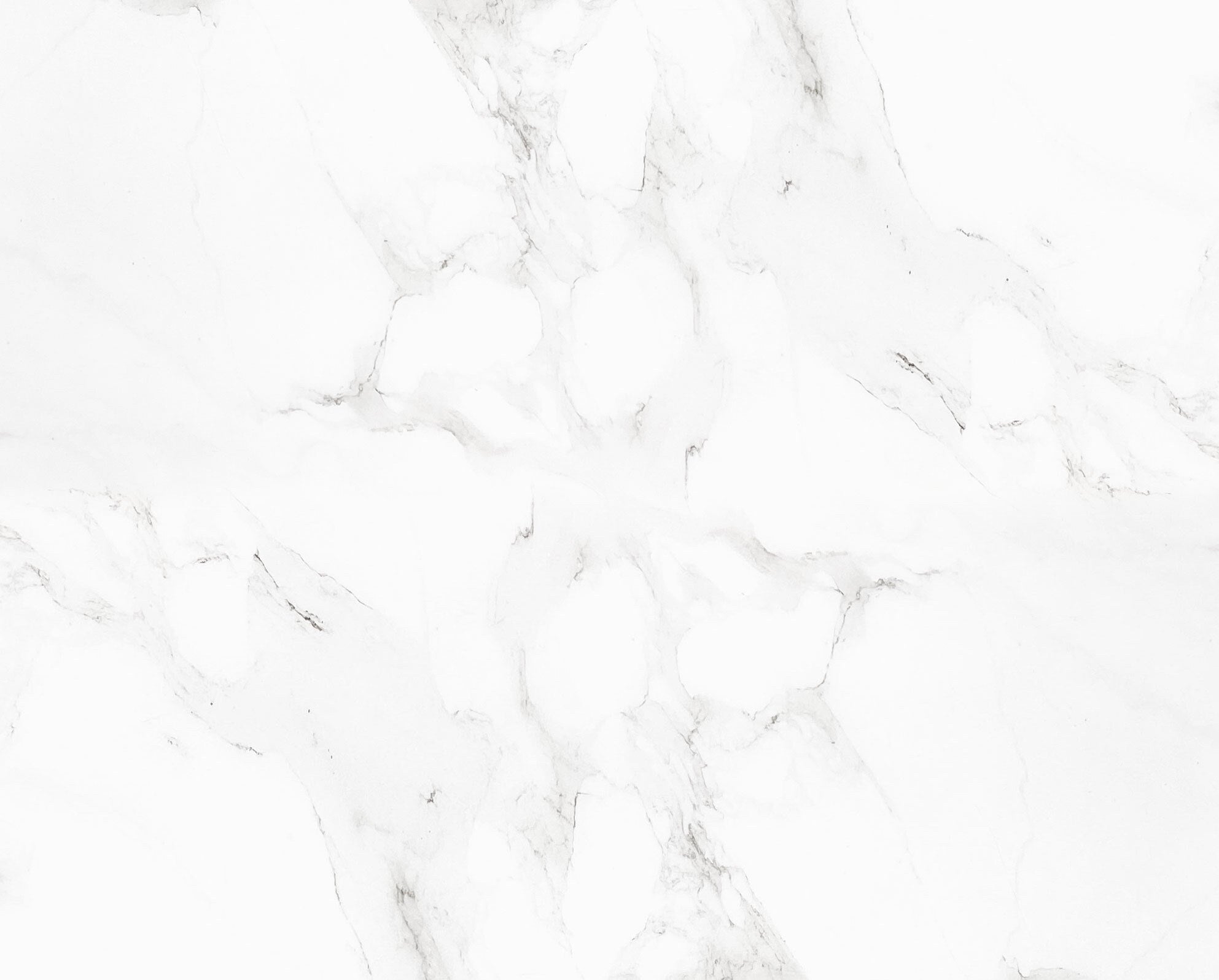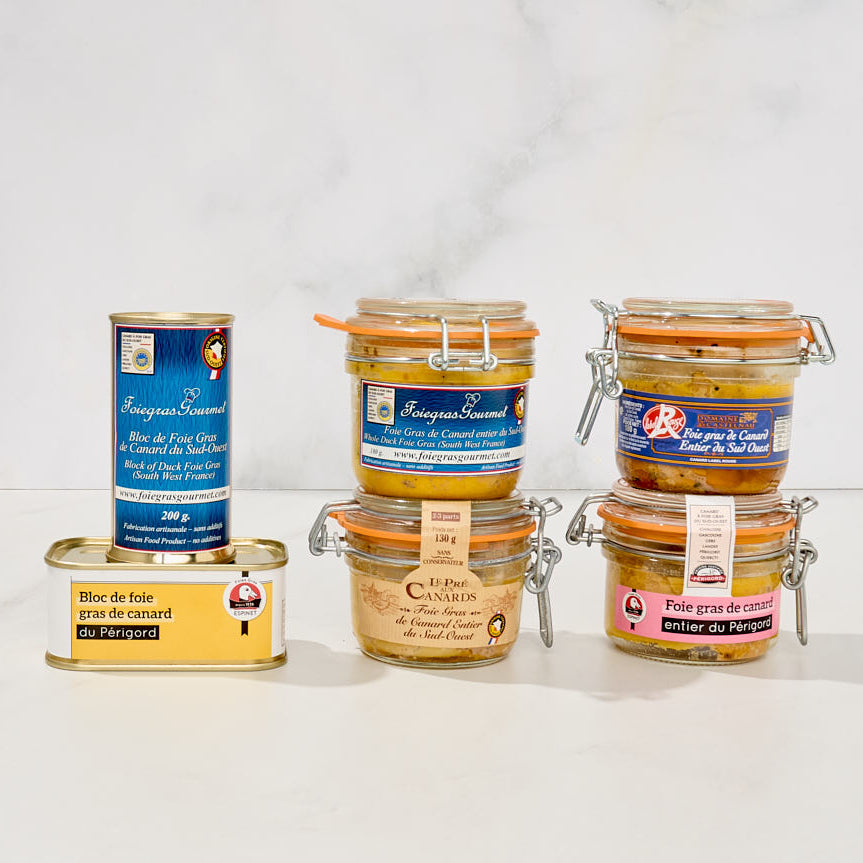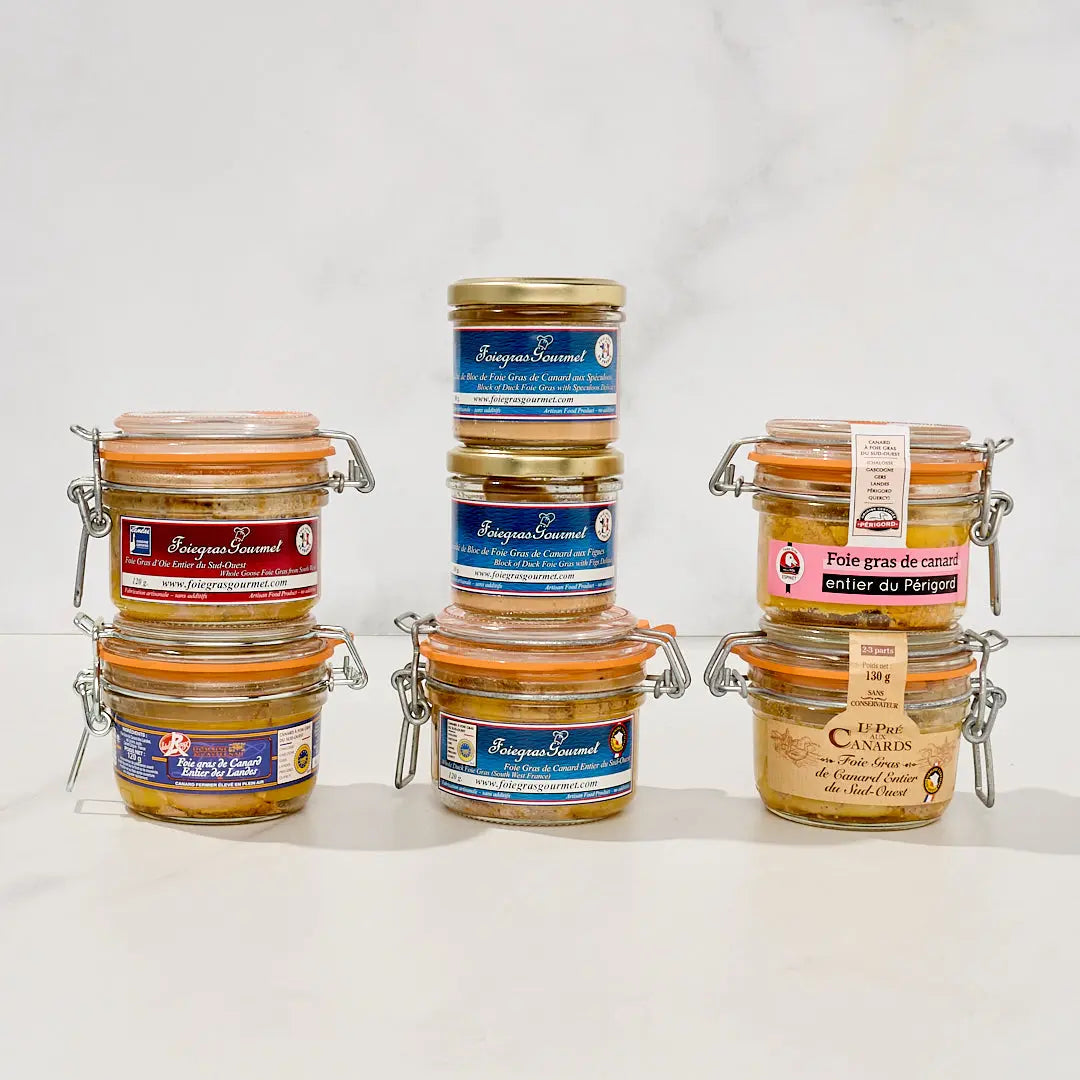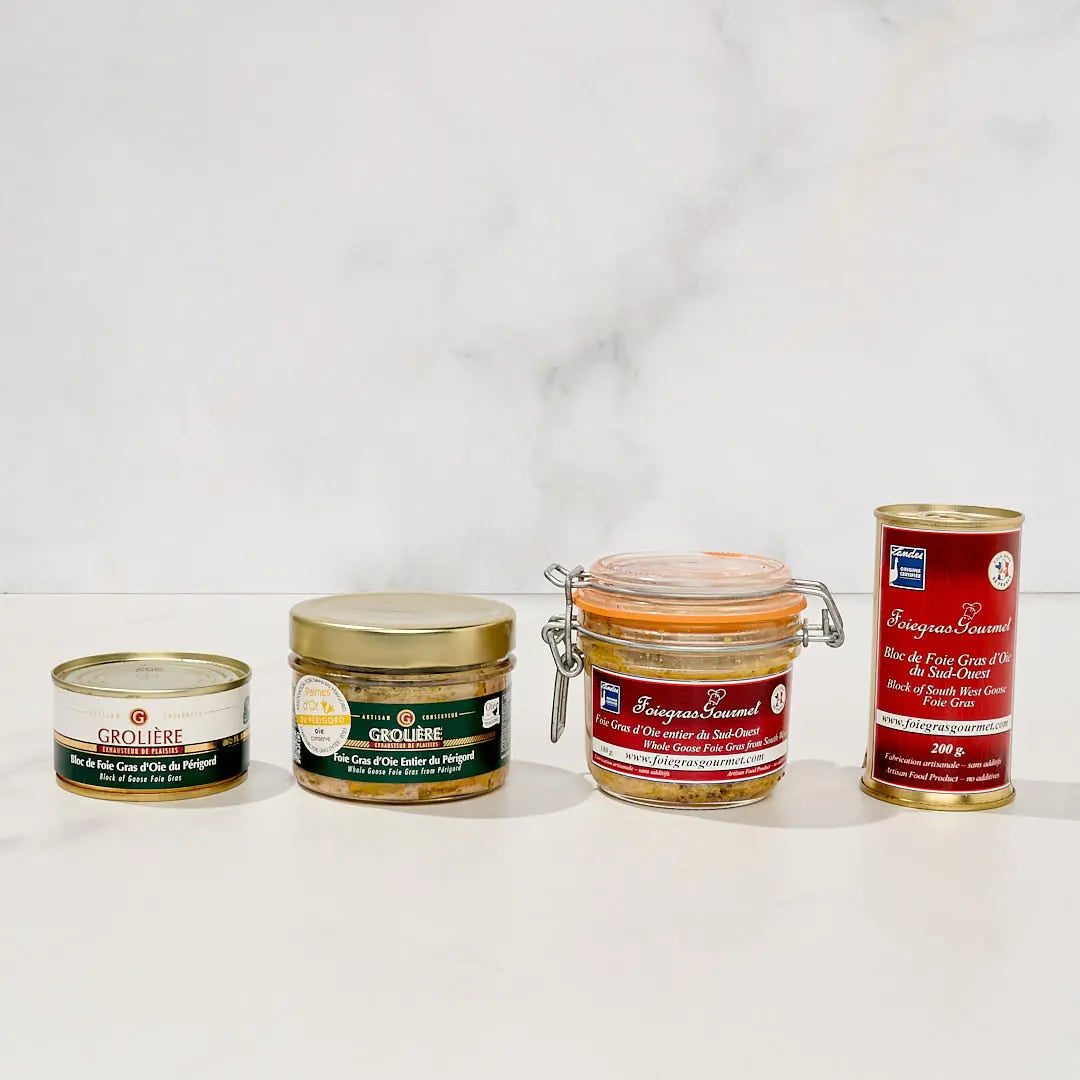How is foie gras made?
In the past, all farmers in the South-West of France produced their foie gras by carrying out all parts of the production operation themselves, from the birth of their goslings and ducklings to the canning of their foie gras, terrines, pâtés, confits and cassoulets.

This was only possible when raising a few ducks and geese a year, just as it is possible to make jams or raise a to feed the family. Even today, hygiene rules are so strict that it is not possible to market these products.
Foie gras production is a long process of rearing geese and ducks, and the preparation of fresh liver prior to canning requires considerable patience and know-how.
A good foie gras begins with an extensive breeding in the open air, respecting the natural needs of the animals.
Goslings and ducklings are no longer born on the farms themselves, but in hatcheries and arrive at the breeding farms at 1 day old. The birds will wait 3 weeks to a month in a heated and ventilated shed before being strong enough to face the outside world where they have access to a large outdoor run with free access to food and water.
The ducks and geese enjoy an outdoor life in contrast to many other farm animals such as turkeys, chickens, pigs, and even cows, many of which today no longer graze freely in the fields.
Then, from 81 days for PGI foie gras and 90 days for Label Rouge foie gras, the farmer increases the feed to prepare the animals for force-feeding.
The ducks are slaughtered in regulated slaughterhouses in full accordance with strict hygiene and sanitary safety conditions. Canning, due to its high temperature cooking, has been the traditional method of preservation since the middle of the 19th century as it preserves the flavor of foie gras and ensures a long shelf life (several years at room temperature) of the foie gras.
Once the duck or goose is slaughtered, its liver is carefully removed, together with the other parts of the duck which will be used to make magret, gizzards, and confits.
And there begins the process of preparation:
-the selection of the excellent foie gras for the whole foie gras and good foie gras for the blocks of foie gras.
Even though the ducks are raised identically, their livers will be of slightly different sizes and quality. So, like a champagne producer who agrees to vintage some years and not others, a foie gras producer must keep the best foies gras for their whole foie gras jars.
-Deveining: this is the most delicate and skilled operation that stresses any amateur cook since separating the lobes of the liver by removing the veins without cutting is not easy. If not done correctly, coloring and preservatives must be added to mask the resulting bitter taste. The real talent of the artisan is in knowing how to devein the foie gras correctly.
-Seasoning and cooking: it is the expertise of the artisan canners, as chefs, with their own particular recipe, cooking to the degree and to the minute, then delicately seasoning their foie gras that produces the very best foie gras.
A good quality foie gras will always come from the liver of a duck or goose that has been raised in the open air, fed on locally grown cereals, deveined with precision, then seasoned with few good quality spices and cooked to perfection.
Consume only PGI or Label Rouge foie gras
Care needs to be taken when choosing foie gras to ensure that you always select a product which is prepared to a high standard and in accordance with appropriate animal welfare standards:
-foie gras for which the origin is not specified will most often come from Central Europe.
-Foie gras from France tells you simply that the ducks were raised in France.
-PGI foie gras, assures you that in addition to being a French foie gras, the producer has respected precise standards, including adhering to minimum space requirements and feeding a quality diet (wheat and corn) to the animals.

Traditional foie gras farmers in southwestern France are under threat from factors outside their control: multinational companies have decided to produce foie gras at low prices, using production processes bearing no resemblance to traditional methods and in countries where laws and regulations in relation to animal welfare are less demanding.
The solution for the small farmers with their strict production rules is to make their operation and approaches transparent, allowing anyone to visit their duck and goose farms and make their own judgement.
Finally, the production of traditional foie gras is a very small industry (and the relatively small number of ducks and geese raised cannot be compared with the millions of chickens, cows and pigs that are raised, often in stark conditions).
When the state of California or the city of New York bans foie gras, do you think about the thousands of fast-food restaurants that offer chicken and other meat raised in cruel conditions?
It is true that shocking images abound on the internet. However, there is equally much scientific documentation which explains that force-feeding is simply a natural process and that the anatomy of ducks and geese accommodates it without any suffering.
My opinion is that we have to fight against factory farming and sanction the companies trying to produce at the lowest cost.
The PGI and the “Label Rouge” are an example of the standards that many countries could follow in order to guarantee irreproachable product quality and a greater respect for animal welfare through the imposition of strict standards.
This is an encouraging first step, and I hope that these standards will become increasingly demanding.
By deciding not to consume any animal products, vegans are making an entirely reasonable personal choice which we should respect; at the same time, we should not restrict the freedom of other consumers by making them feel guilty or preventing them from enjoying the products they choose.
We can all contribute to improved animal welfare by eating less meat and, in the case of foie gras, by selecting those of IGP or Label Rouge quality, accepting that we should pay a little more for higher quality products and standards.












كم يبلغ سعر الكيلو غرام من كبد الإوز في الوقت الحالي ؟
Ask questions on the topic of foie gras